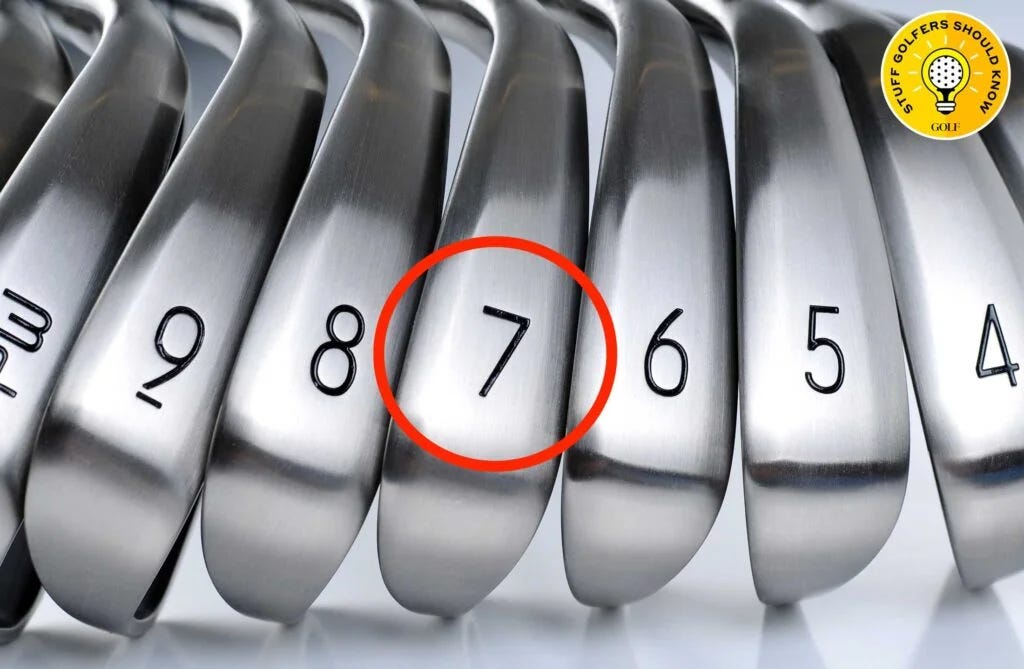My approach shots have been coming up short way too often for my liking, so I decided to hit the range and double-check my carry yardages.*
*I use a PRGR device, which I highly recommend. It’s fairly affordable (around $220 compared to $1,000+ for most launch monitors). It’s super easy to use and compact.It turns out that my hunch was right—my irons weren’t carrying as far as they used to. My 7-iron was showing in the low 160’s whereas I generally play it closer to the low 170’s.
Well, this is a problem. I’m almost 10 yards off my expected carry distance.
I need to either adjust my yardages downward or figure out why they are lower. I'll share more about what I did later.
True Carry Yardage
Most amateurs don’t know their true carry yardages. This is setting you up for failure! Golf is hard enough as is (Steph, Jenn, and Hannah, I’m looking at you).
Knowing your true yardages will drastically improve GIRs and, at least, increase your odds of being closer to the green.
Another mistake amateurs make is labeling their clubs at fixed yardages. You want a range for each club.
Often, we pick a yardage based on our best-struck shots, which sets us up for failure. We must account that we will not hit it perfectly every time.
Here’s what I said last year in “How to Hit More GIRs”:
Knowing your true carry yardage is extremely important for approach shots. Also, realizing that each club doesn’t have one specific yardage but a range of yardages. For example, my nine iron is my 150 club, but I know that, in reality, it’s somewhere between 145 and 155. I use this range when trying to overlay my dispersion oval to the fat part of the green.
My Yardage Issues
Ok, back to my yardage issues. As I mentioned, I have two choices.
Dial back all my yardages to reflect my new reality
Figure out why I’m hitting it shorter
Obviously, I went with number 2 because I can’t accept that I’m getting old and can’t hit it as far!
On a more serious note, after looking at the video, I felt the issue was caused by excessive loft and poor strike quality.
I tend to release the club a bit early, adding loft. This promotes high spinny shots and reduces distance.
So, I worked on really trying not to release early and compressing the ball better. After ten or so shots, I started creeping back into the 170s.
On the flip side of this scenario, early in my golf journey, I realized I needed to lower my yardage to be more consistent. I was too focused on how far I hit the ball, which required all-out effort. My ego was getting in the way.
Eventually I pulled back all my yardages by at least 10 yards across the board. This enabled me to hit at a smoother and more reliable tempo.
If you're in a similar situation, ensure your stock yardages are based on a 90% effort-type swing, not a full-out baseball swing like I was doing.
A Few Random Tidbits
Trying to gauge your yardages at the range with flags/yardage markers is unreliable. Often, the yardages are not what they say, and on top of that, the range balls go as much as 10 yards less than your on-course gamer.
Carry yardage is critical. That’s the number you want for approach shots, not total yardage!
Go to your local golf simulator to better understand your yardages. You can also get more advanced data, like spin rates and launch angle, that could be useful.
You won’t have perfect gapping between clubs. You can’t assume your PW is 140; therefore, your 9-iron is ten yards more at 150. It’ll probably be more like 138 and 153. That’s why it’s important get good data.
See Scottie’s Stock Yardages:
Here is the link for the PRGR Launch Monitor I mentioned above.
TLDR
Know Your CARRY yardages
Your Club Yardages Should be a Range, Not Fixed (i.e. 145 - 155 yds)
Use a Launch Monitor or Radar if Possible
Thank You
Thank you for reading and subscribing. If you enjoyed this piece, hit the “like” ❤️ button below and share it with a fellow golfer.
Have a good weekend!










